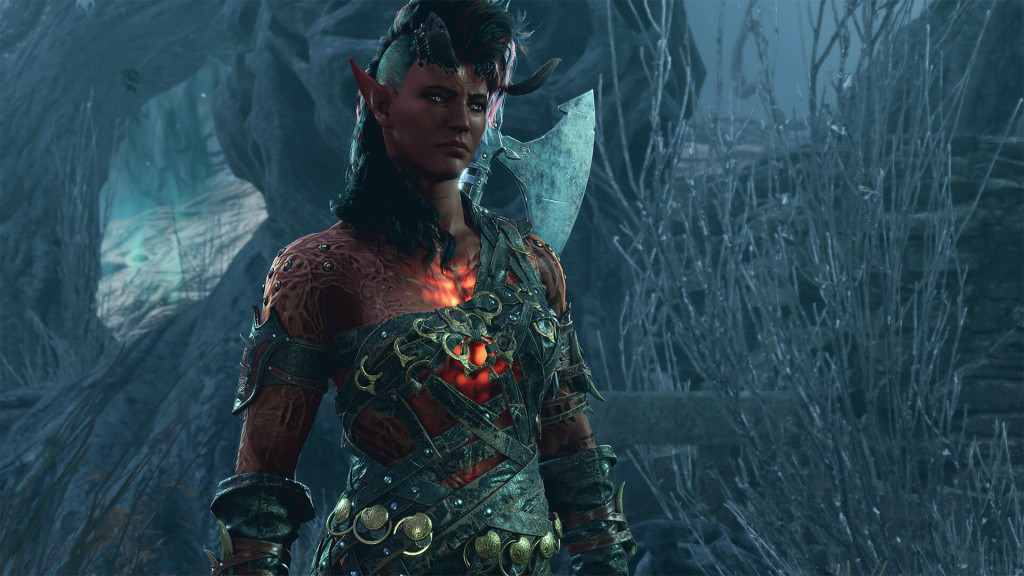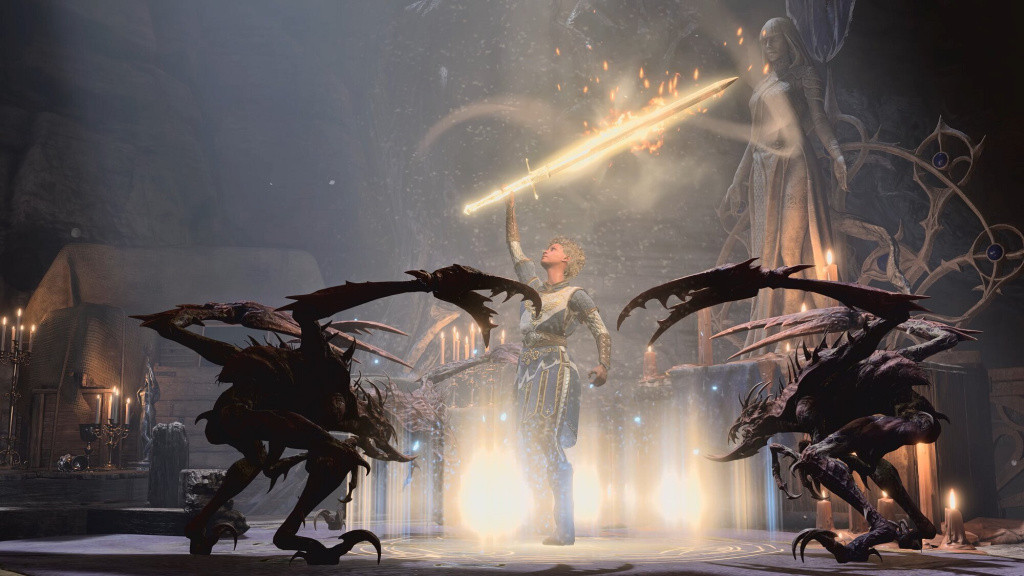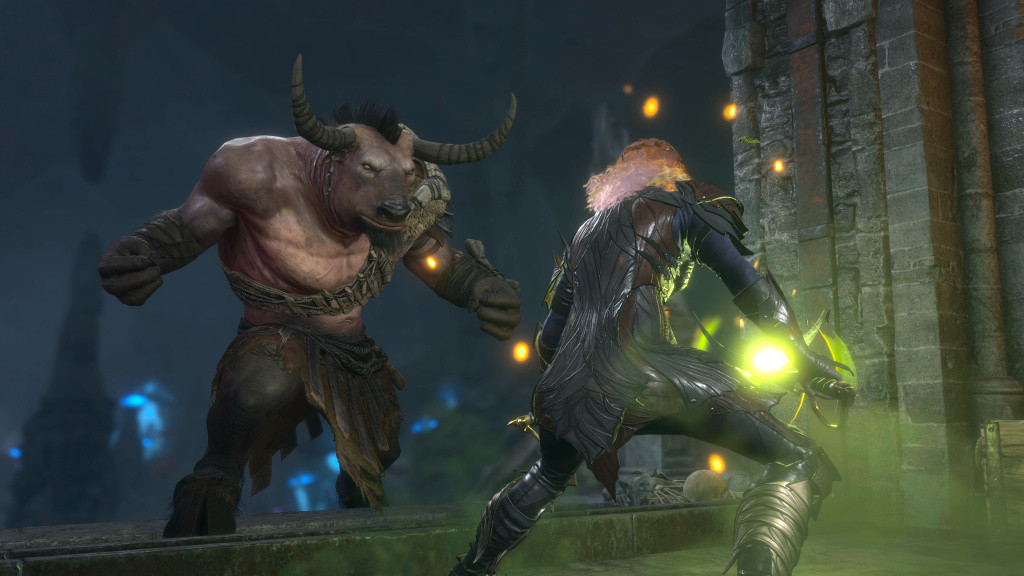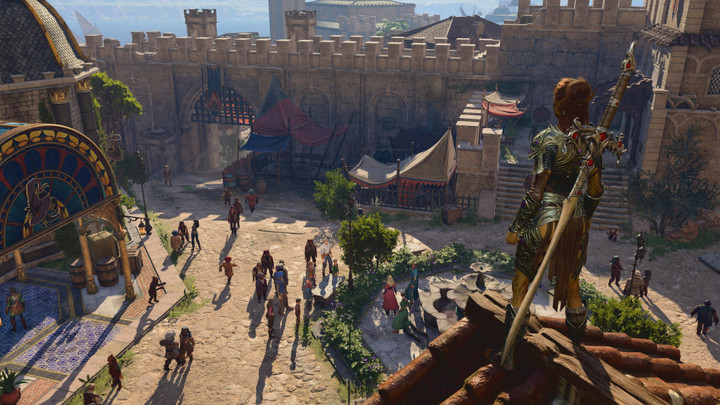Before beginning your journey in Baldur’s Gate 3, most of your decision-making happens at the Character Creation menu. Some of these decisions include your difficulty settings, what your playstyle will be, and creating a character that best compliments your gameplay.
Another equally important decision is what character class you wish to advance with, which also fits in with the playstyle you best want to experience and explore the game content. This comprehensive guide details all the classes and sub-classes available at launch and how they work for Baldur’s Gate 3.
What Are All The Classes And Sub-Classes For Baldur’s Gate 3?
According to developer Larian Studios, players will choose between 12 classes and 46 sub-classes fairly early in Baldur’s Gate 3. Below we have detailed the complete list of classes and their sub-classes that will be available to players at launch on PC and PlayStation 5 consoles, as confirmed by developer Larian Studios:

Barbarian
- Description: Considered savage combatants who can unleash a ferocious rage when engaging in combat, Barbarians have excellent durability and increased damage output, making them ideal for beginners and offensive builds.
- Sub-classes: Berserker, Wild Magic, and Wildheart
Bard
- Description: One of the few versatile classes available, Bards can provide much entertainment and Inspiration to your party through spells and songs.
- Sub-classes: Lore, Swords, and Valor
Cleric
- Description: A symbolic figure of the gods, this class utilizes a powerful arsenal of divine power which can be used for greater will or ill intentions.
- Sub-classes: Knowledge, Life, Light, Nature, Tempest, Trickery, and War
Druid
- Description: Utilizing the powers of Mother Nature, Druids have a deep connection to the lands and the animals that occupy these environments. They also can take animalistic forms found throughout the Realms.
- Sub-classes: Land, Moon, and Spores
Fighter
- Description: Priding themselves in their proficiency in combat, they also have the nature ability to wield many weapons and use them effectively while wearing armor without much hindrance.
- Sub-classes: Battle Master, Champion, and Eldritch Knight
Monk
- Description: Quite similar to the Fighter class with some differences, Monks are known for their unarmed combative skills using powerful punches, blocks, and kicks to stun enemies.
- Sub-classes: Four Elements, Open Hand and Shadow

Paladin
- Description: A hybrid of the Cleric and Fighter classes, the Paladin, like the Bard, are versatile fighters providing defensive support through their ability to deal with powerful attacks.
- Sub-classes: Ancients, Devotion, Oathbreaker, and Vengeance
Ranger
- Description: This class is the trackers and scouts that wander throughout the world in the prospect of honing their abilities while understanding their connections to nature.
- Sub-classes: Beast Master, Gloom Stalker, and Hunter
Rogue
- Description: Masters of stealth combat, the rogue agent lingers in the shadows hunting their targets before unleashing sneak attacks to take down their enemies.
- Sub-classes: Arcane Trickster, Assassin, and Thief
Sorcerer
- Description: With a great affinity to magic, sorcerers are gifted spellcasters drawing on the powers bestowed to them.
- Sub-classes: Draconic Bloodline, Storm Sorcery, and Wild Magic
Warlock
- Description: Having pledged allegiance to an all-powerful deity, Warlocks have made a deal to exchange their unwavering loyalty for a skillset powered by mystical abilities and magic.
- Sub-classes: Archfey, Fiend, and Great Old One
Wizard
- Description: A little similar to sorcerers, whereas wizards are embued with arcane abilities that are governed by a specific school of magic which includes mastering incantations from books and learning new spells from scrolls
- Sub-classes: Abjuration, Conjuration, Divination, Enchantment, Evocation, Illusion, Necromancy and Transmutation
Baldur’s Gate 3 Classes & Sub-Classes: How Do They Work?
To forge a legacy, you need an identity. Baldur’s Gate 3 is a game all about you. Your decisions in character creation will impact your experiences in Faerûn.
— Baldur's Gate 3 re-rolled the D8 🥳 (@baldursgate3) July 20, 2023
BG3 launches August 3rd on PC with 12 classes, 46 subclasses, 11 races, and 31 subraces.https://t.co/ivluI2bRK0pic.twitter.com/gGfYaDbLJM
As previously mentioned, Baldur’s Gate 3 will have 12 main classes at launch, each with unique sub-classes. There are 46 sub-classes total, and the developer has noted in their Panel From Hell showcase livestream that more sub-classes will be added post-launch.
These classes can be chosen during the Character Creation menu when creating your in-game character that fits your playstyle, with the option to select a subclass early in-game. These classes and sub-classes can be adjusted throughout your campaign based on various abilities: Strength, Dexterity, Constitution, Intelligence, Wisdom, and Charisma.
Naturally, whichever class and sub-class you have chosen from your character has a primary ability you will need to take great care of when tweaking your character. In addition, specific classes and sub-classes have a greater affinity to these abilities and, as such, can influence your action and combat skills, health, Hit Points, enemy Armor Class and more.

Throughout your campaign, you’ll earn experience points from combat, completing story quests, discovering minimap points, exploring the world, and making skill checks and dialogue choices. These experience points can be used to select your subclass and level up your character, in which you can see what Hit Points, proficiencies, spells, and incantations are available for you to choose.
Likewise, you may be able to select a new Feat for your character to enhance your character further. Feats are unique abilities that let players grant them various capabilities previously unattainable, which can vary from improving their Ability Scores to better proficiencies and skill bonuses.

 No ads, our video library,
No ads, our video library,

